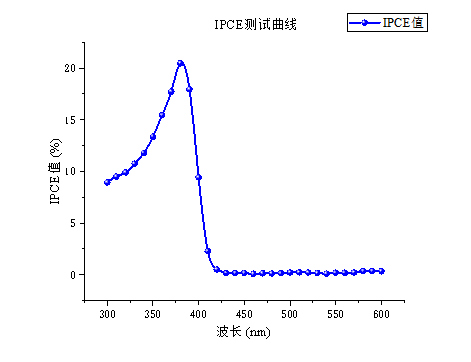With the ongoing global warming issue, the technology for producing green and clean energy from sunlight continues to develop. The efficiency of sunlight utilization is one of the essential parameters for assessing material quality. Particularly, the efficiency of using different wavelengths of full-spectrum light needs to be evaluated through monochromatic light photoelectric conversion efficiency.
Perfectlight Technology introduces the IPCE 1000 Photoelectrochemical Testing System, a system that can precisely measure the monochromatic light photoelectric conversion efficiency of materials. It is equipped with a high-sensitivity, strong interference-resistant lock-in amplifier system and a chopper system, allowing for accurate and stable measurements of monochromatic light intensity and photocurrent.

▲ Highly Suitable ● Moderately Suitable ○ Can Be Used
▲ Measurement of photoelectric conversion efficiency during photochemical reactions
▲ I-V, I-t, and V-t testing of electrochemical reactions
▲ Study of the influence of light on the electrochemical behavior of electrode materials
▲ Research on photocatalytic reactions

TiO₂ Sample IPCE Test Curve
Sample: TiO₂ (Titanium Dioxide)
Working Electrode: TiO₂
Counter Electrode: Pt Electrode
Reference Electrode: Ag/AgCl Electrode
Electrolyte: 0.1 M Na₂SO₄ Solution
Bias Voltage: 0.3 V
High Sensitivity, Strong Interference Resistance
The IPCE 1000 Photoelectrochemical Testing System uses the American Standford SR830 Lock-in Amplifier to amplify weak currents, allowing the measurement of photocurrents in the range of 1 pA to 1 mA. It employs the Standford SR540 Chopper, adjustable within a broad frequency range of 4 to 3.7 kHz. Utilizing the time correlation between the photocurrent signal and the light signal, along with the lock-in amplifier's filtering capability, it can filter out interference from ambient light and current fluctuations, further enhancing the sensitivity of current detection.
Dual Grating Structure for Precise Monochromatic Light
The monochromator of the IPCE 1000 Photoelectrochemical Testing System is designed with a dual grating structure, with an adjustable slit width of 0.01 to 3 mm, ensuring an accuracy of ±0.2 nm in output monochromatic light and a half-bandwidth of less than 10 nm. This significantly improves monochromaticity compared to light source and filter combinations.
Continuously Adjustable Wavelength for Full Spectrum Photoelectric Conversion Efficiency Measurement
The monochromator of the IPCE 1000 Photoelectrochemical Testing System can be continuously adjusted over a wavelength range of 200 to 1000 nm (with dual gratings: 1200 L/mm & 600 L/mm), with a minimum wavelength adjustment of 1 nm. Compared to light source and filter combinations, this allows for the measurement of photoelectric conversion efficiency at any wavelength within the spectral range of a xenon lamp source. This is particularly suitable for measuring IPCE of catalytic materials with modified broad spectrum absorption ranges.
UV Enhancement Design for Accurate Measurement of UV-Responsive Catalysts
The light source of the IPCE 1000 Photoelectrochemical Testing System undergoes UV enhancement processing, resulting in a nearly 20-fold increase in light intensity in the UV region. This significantly enhances the UV spectrum's output. Simultaneously, the light intensity detector is upgraded, increasing the UV spectrum's responsiveness by nearly two orders of magnitude, ensuring the accuracy of measurements for UV-responsive catalysts, especially those with low photoelectric conversion efficiency.
Various Measurement Modes for Different Testing Needs
The IPCE 1000 Photoelectrochemical Testing System conducts sample testing through an electrochemical workstation, providing diverse testing modes. It can determine different wavelength I-V curves, identify the photoelectric response bias voltage range of catalysts, measure photoelectric conversion efficiency at different biases, and directly perform LSV, I-t curve measurements using the electrochemical workstation.
Open Testing Platform to Adapt to Various Experimental Conditions
The testing platform of the IPCE 1000 Photoelectrochemical Testing System adopts an open modular design, with several testing scenarios available:
1. Standard three-electrode reactors can be used for photochemical IPCE testing;
2. The Labsolar-6A Micro Gas Detection System can be used with three-electrode reactors or double-chamber reactors to achieve synchronous measurement of IPCE and product data;
3. Customized reactors can be designed to adapt to additional energy fields, such as magnetic fields or thermal fields, based on your specific experimental requirements, allowing for in-situ measurement of catalyst IPCE under multiple field synergies;
4. Customized reactors can be used in conjunction with online infrared and mass spectrometry analysis detection equipment to achieve rapid detection of trace products.
